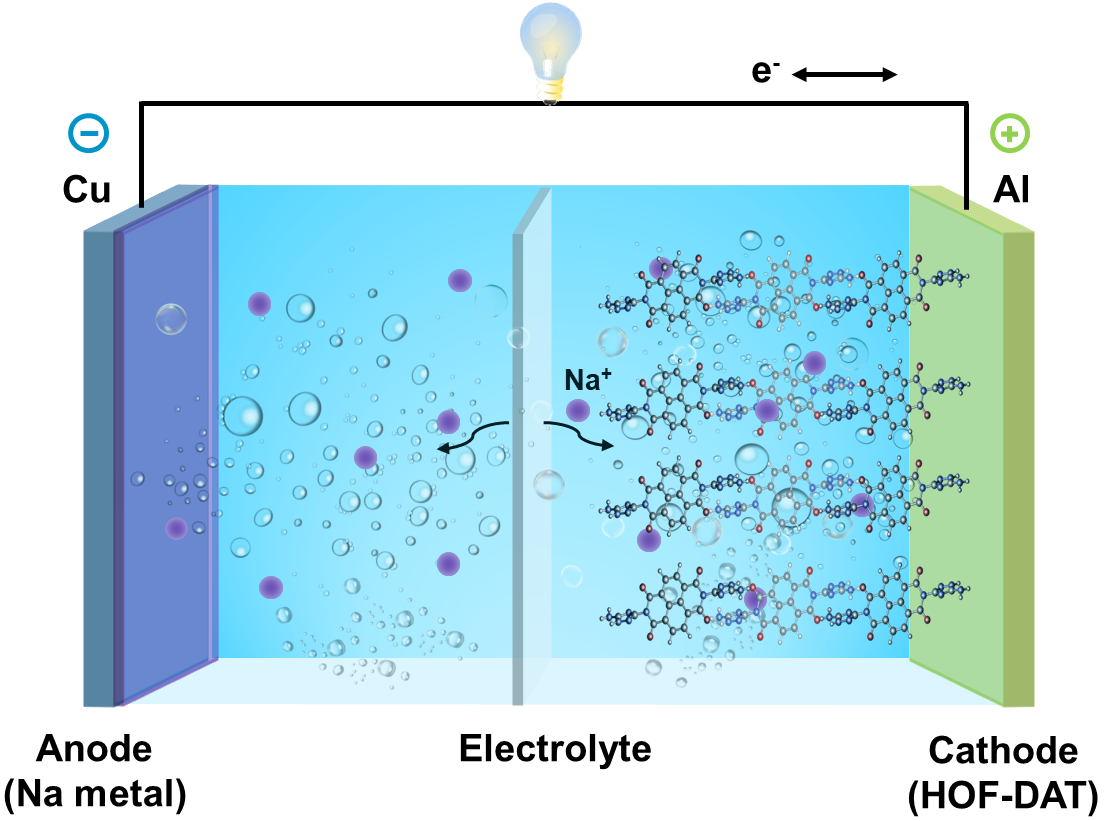Long touted as one of the most promising technologies for commercial storage use, sodium-ion batteries have the advantages of lower manufacturing costs and abundant, environmentally benign raw materials, compared to ubiquitous lithium-ion batteries. A research team at China’s Soochow University has come up with a solution to make this technology even more competitive in terms of sustainability and cost while improving chemical stability with the help of hydrogen-bonded organic frameworks (HOFs).
While they have attracted a lot of research interest by virtue of their great structural crystallinity, large surface areas, and porosity, HOFs’ potential in electrochemical applications has been elusive because of weak hydrogen bonds that would dissociate in solution, and eventually compromise the structural integrity.
The Chinese researchers have overcome this challenge by designing and introducing multisite hydrogen bonding. Namely, for the first time, 2D molecular sheets of HOFs were prepared using diaminotriazole linkers to form multi-site hydrogen bonds. The scientists have detailed their approach in the paper 2D Molecular Sheets of Hydrogen-Bonded Organic Frameworks for Ultrastable Sodium-Ion Storage, published in Advanced Science.
Their product displayed excellent chemical stability and diminished solubility in common organic solvents and enabled an exceptionally long life of more than 10,000 cycles at 1 A g-1, far superior to other organic electrode materials. The researchers hope this technology may be used for large-scale stationary energy storage, where costs and battery cyclelifes are emphasized over energy density.
Popular content
While the use of organic electrode materials would make sodium-ion technology even cheaper, the researchers say they have not evaluated the cost. “Our study is more like a proof of concept by showing the introduction of multi-site hydrogen bonding within hydrogen-bonded organic frameworks would dramatically increase the chemical stability and achieve a super long cycle life,” Yanguang Li, a professor with the Institute of Functional Nano and Soft Materials at Soochow University, China, tells pv magazine. “There is still a long way to go before the practical viability of this organic electrode material could be rigorously proven.”
The increasing number of research efforts is signaling that sodium-ion technology is coming to fruition sooner rather than later, offering the potential to relax supply constraints in battery raw materials. What is more, the technology's commercial breakthrough now seems imminent following the announcement from battery manufacturing heavyweight CATL earlier this year on the start of industrial production and plans to stabilize the industrial chain for its first-generation sodium-ion batteries by 2023.
This content is protected by copyright and may not be reused. If you want to cooperate with us and would like to reuse some of our content, please contact: editors@pv-magazine.com.



1 comment
By submitting this form you agree to pv magazine using your data for the purposes of publishing your comment.
Your personal data will only be disclosed or otherwise transmitted to third parties for the purposes of spam filtering or if this is necessary for technical maintenance of the website. Any other transfer to third parties will not take place unless this is justified on the basis of applicable data protection regulations or if pv magazine is legally obliged to do so.
You may revoke this consent at any time with effect for the future, in which case your personal data will be deleted immediately. Otherwise, your data will be deleted if pv magazine has processed your request or the purpose of data storage is fulfilled.
Further information on data privacy can be found in our Data Protection Policy.